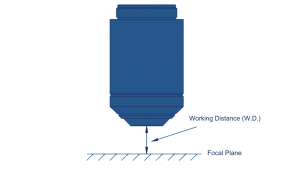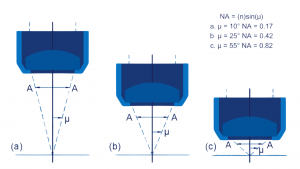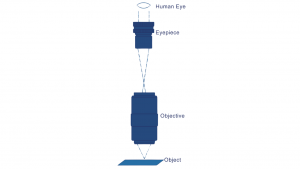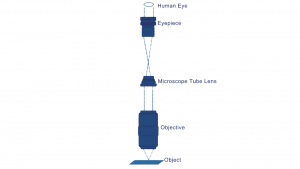Conjugate Long Working Distance Microscope Objectives: Enhancing Flexibility and Precision
Infinite conjugate long working distance microscope objectives are integral components in modern optical microscopy, offering unparalleled flexibility and high magnification capabilities. These objectives have become essential tools across various scientific and industrial fields due to their unique design and advanced optical performance.

Microscope Objective Working Distance
Key Features and Benefits
- High Magnification and Superior Flexibility: Infinite conjugate objectives project images to infinity, requiring a tube lens for imaging. This design allows the seamless integration of optical components such as splitters and polarizers without sacrificing image quality. Compared to finite conjugate systems, they provide superior flexibility and higher magnification, making them a preferred choice in advanced microscopy applications.
- Complex Optical Designs for Long Working Distances: Achieving long working distances while maintaining high magnification necessitates intricate optical designs. These designs balance resolution and aberration correction, addressing the challenges posed by high numerical apertures (NA). This complexity enables applications that demand both detailed imaging and operational flexibility.

Microscope Objective Working Distance
Applications and Advancements
- Diverse Applications: Microscope objectives are vital in fields such as biomedical research, precision detection, and semiconductor processing. They are also employed independently in scientific research and industrial production, including tasks like atom capture and laser processing. Long working distance objectives are particularly beneficial in scenarios requiring ample space between the lens and the sample, such as optical fiber fusion and crystal growth observation.
- Evolution and Importance: The development of microscope objectives has been driven by the increasing demand for specialized lenses with better flat-field characteristics and chromatic aberration correction. As research and industrial needs evolve, so do the designs and capabilities of these objectives, highlighting their ongoing importance in various applications.
Technical Insights
- Working Distance: Working distance, the space between the object and the lens’s front end, is a critical factor in selecting microscope objectives. Longer working distances provide greater flexibility, reduce the risk of collision between the sample and the objective, and minimize contamination and lens damage. These features are essential for applications involving varying sample thicknesses and delicate procedures.
- High Magnification and Resolution: The magnification of infinite conjugate objectives is determined by the focal lengths of the objective and the tube lens. High-magnification objectives, typically exceeding 50X, enhance resolution, which is crucial for detailed imaging tasks like optical fiber alignment. The resolution is influenced by the wavelength (λλ) and numerical aperture (NA) of the lens, with the following formula:
Resolution=0.61×λ/NA
Where λλ is the wavelength and NA (numerical aperture) is the most common aperture representation for microscope objective lenses:
NA=n*sinθ
Increasing NA improves resolution but poses challenges in correcting aberrations and achieving long working distances simultaneously.
Infinite vs. Finite Conjugate Systems
- Finite Conjugate Systems: Finite conjugate systems converge light from a non-infinite source to a specific spot, projecting the magnified image onto the eyepiece or camera sensor. These systems adhere to the DIN or JIS standards and are prevalent in basic microscopes where cost-effectiveness and simplified design are prioritized.
- Infinite Conjugate Systems: In infinite conjugate systems, light from an infinite source is focused on a small spot, with infinity directed towards the eyepiece or camera sensor. This design includes an additional tube lens, allowing the integration of optical components like filters and beamsplitters. Infinite conjugate systems are common in advanced microscopy applications, such as fluorescence microscopy, where specific wavelengths need to be observed or blocked.



Additional Considerations
- Working Wavelength: Microscope objectives typically operate in the visible light range, focusing on chromatic aberration correction. Ultraviolet objectives designed for special purposes can enhance resolution, catering to specific application needs.
- Field of View: The field of view, or the observable area by the lens, is critical for clear imaging across the entire observable area. High-end objectives with flat-field characteristics ensure minimal field curvature, providing superior image quality.
Infinite conjugate long working distance microscope objectives are crucial for various scientific and industrial applications due to their high-resolution imaging capabilities and operational flexibility. Their continuous evolution reflects the growing demand for advanced optical designs that meet diverse research and production needs. Despite the challenges in achieving long working distances, advancements in optical design and lens processing continue to enhance the performance of these objectives, ensuring clear imaging and precise results for a wide range of applications.
Contact Shanghai Optics today! We’d be more than happy to discuss your projects and how to best bring them to fruition.




